Naveen-Shankar Nagaraja
L2PF -- Learning to Prune Faster
Jan 07, 2021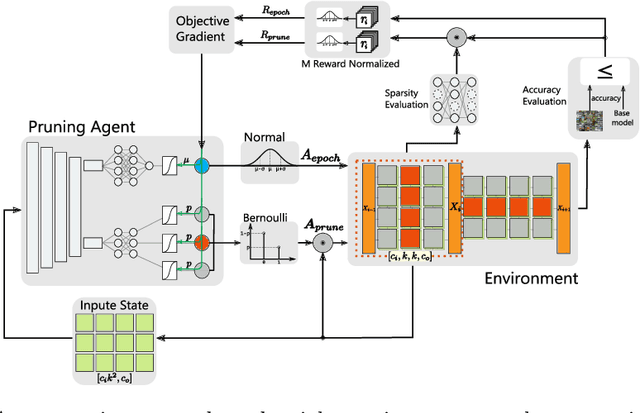
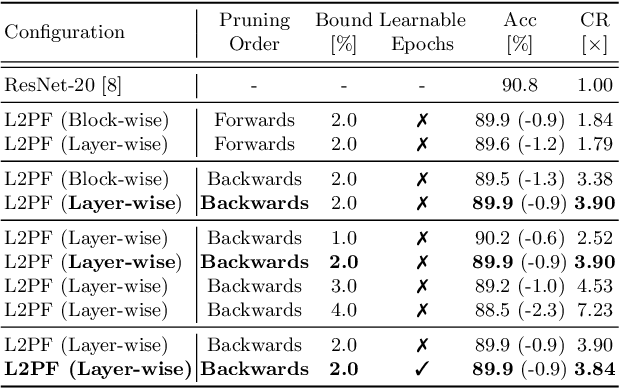
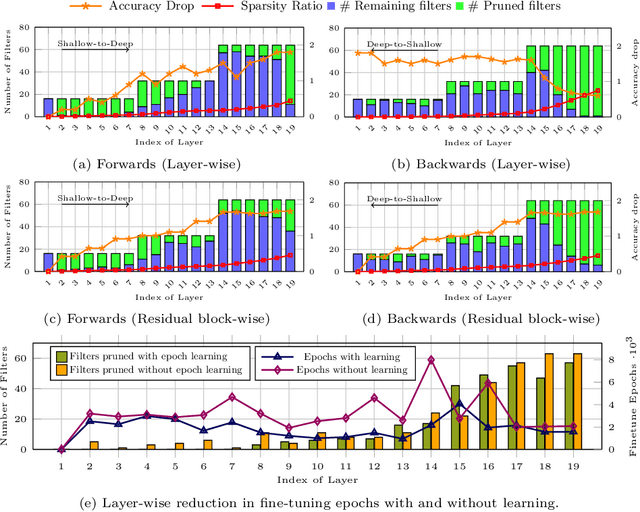
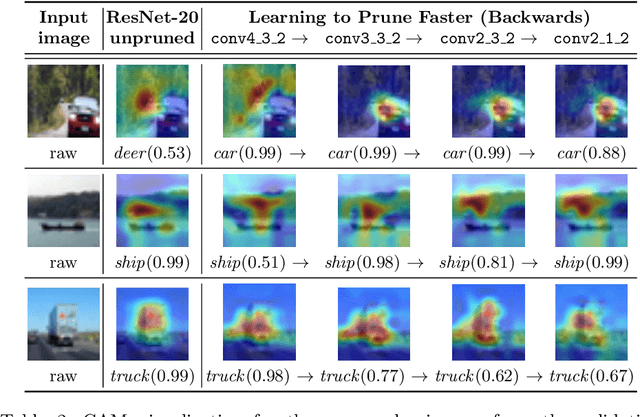
Abstract:Various applications in the field of autonomous driving are based on convolutional neural networks (CNNs), especially for processing camera data. The optimization of such CNNs is a major challenge in continuous development. Newly learned features must be brought into vehicles as quickly as possible, and as such, it is not feasible to spend redundant GPU hours during compression. In this context, we present Learning to Prune Faster which details a multi-task, try-and-learn method, discretely learning redundant filters of the CNN and a continuous action of how long the layers have to be fine-tuned. This allows us to significantly speed up the convergence process of learning how to find an embedded-friendly filter-wise pruned CNN. For ResNet20, we have achieved a compression ratio of 3.84 x with minimal accuracy degradation. Compared to the state-of-the-art pruning method, we reduced the GPU hours by 1.71 x.
ALF: Autoencoder-based Low-rank Filter-sharing for Efficient Convolutional Neural Networks
Jul 27, 2020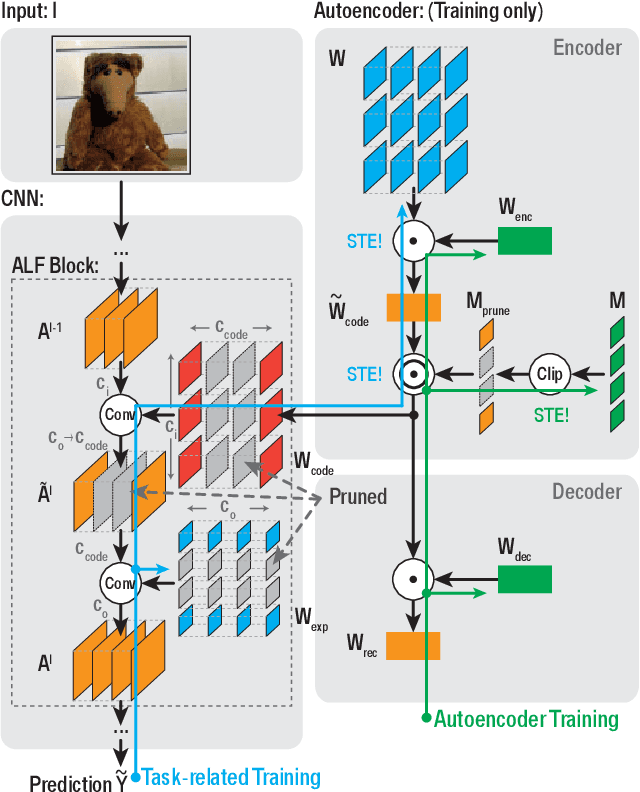
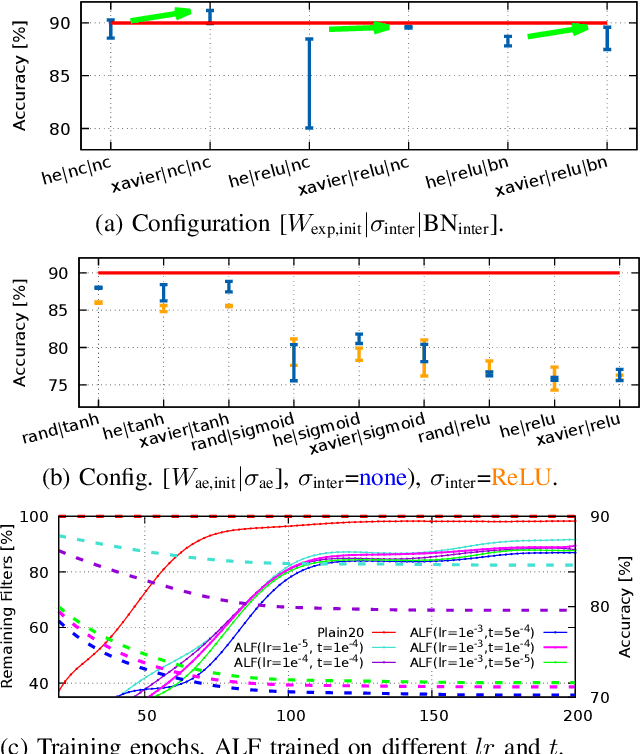

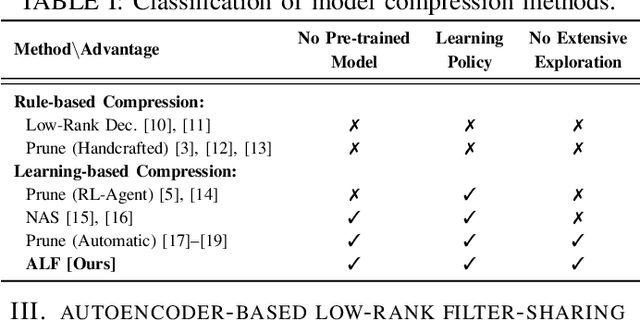
Abstract:Closing the gap between the hardware requirements of state-of-the-art convolutional neural networks and the limited resources constraining embedded applications is the next big challenge in deep learning research. The computational complexity and memory footprint of such neural networks are typically daunting for deployment in resource constrained environments. Model compression techniques, such as pruning, are emphasized among other optimization methods for solving this problem. Most existing techniques require domain expertise or result in irregular sparse representations, which increase the burden of deploying deep learning applications on embedded hardware accelerators. In this paper, we propose the autoencoder-based low-rank filter-sharing technique technique (ALF). When applied to various networks, ALF is compared to state-of-the-art pruning methods, demonstrating its efficient compression capabilities on theoretical metrics as well as on an accurate, deterministic hardware-model. In our experiments, ALF showed a reduction of 70\% in network parameters, 61\% in operations and 41\% in execution time, with minimal loss in accuracy.
 Add to Chrome
Add to Chrome Add to Firefox
Add to Firefox Add to Edge
Add to Edge